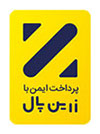So you want to pass on your language to your children, but feel that they are not getting enough exposure to it – a familiar scenario for many minority language parents. You have made a quick calculation and noticed that you are not reaching the recommended thirty percent of exposure during your child’s waking time. Should you give up? Definitely not! While the thirty percent exposure is a good goal to have, it is in no way an end all and be all. Your children can become bilingual with less exposure. To improve the odds, make every exposure minute count.
You are already spending as much time as you can with your children. You have probably also exhausted the pool of relatives and friends who could help you. Increasing the amount of visits “back home” might not be viable due to time pressure or financial reasons. Money may also be an obstacle to getting a child minder or employing an au pair who can speak the language, hiring a language tutor or sending your children to a holiday camp in your language.
1. More effective interaction
When you spend time with your children, speak as much as possible directly to all of them. In a family with more than one child it is especially important to pay attention to the younger siblings. How much do you talk directly with the smaller ones? Is it the chatty eldest child that gets all the direct interaction with you? If both parents speak the minority language at home – how much are you talking with the children? Are they mostly listening to the adults speaking between them?
Immersion is one of the best ways to boost a minority language. During your visits “back home”, make sure that your children get to spend as much time as possible with monolingual speakers. If you can, let your children visit on their own, maybe traveling with other adults.
Create a Skype or Google Hangout schedule with grandparents, relatives and friends, so that the calls really do take place regularly. Not only are these calls good for the language skill, but also help to cherish the all important family bonds and friendships.
Check whether there are playgroups or immersion classes in your language which your children could attend instead of the majority language ones. If you know of other parents looking for exposure in the same language as you, meet up with them and see whether there is potential for you to arrange something together.
2. More reading
If you have read my blog before, you will already have come across this a few times: reading is so important when children are learning a language (and for the rest of their lives, for that matter). Increase the amount of time spent with books and decrease the time your children get one-way exposure in the form or children’s programmes, cartoons, movies and computer games. I am not saying that these are no good for supporting a minority language, but if you want to intensify the minority language exposure, then reading and discussing the story’s characters and plot is so much more effective.
3. More fun
This is another one of my favourite pieces of advice: we learn better when we have fun. Engage your children in whatever you are doing. Play on your children’s interests – even if these interests are not at the top of your own favourite pastimes. Let them choose the books you read, the games you play and the activities you do – as long as everything happens in your language, go along with it.

 Persian
Persian  English
English  Arabic
Arabic 

